

Technical Translation

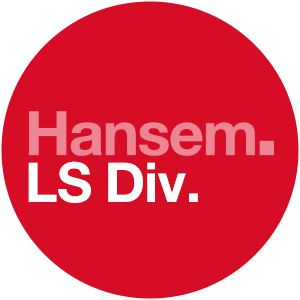
User content needs to do more than simply deliver information. When new products and applications are released, we advise our clients that the content released with their product must stimulate users to boost user adoption rates. One content medium that we recommend to our consumer electronics clients is our Handbook range of mini manuals. The Handbook approach is receiving remarkable attention from other smartphone manufacturers and is popular with customers because it uses concise explanations and engaging graphics.
A product’s Handbook provides content that attracts user attention at the early stages of a product launch. The focus is usually on new features and device characteristics that are central to the product’s marketing strategy. Unlike a conventional user guide, the Handbook’s content focuses on key features and uses scenario-based images.
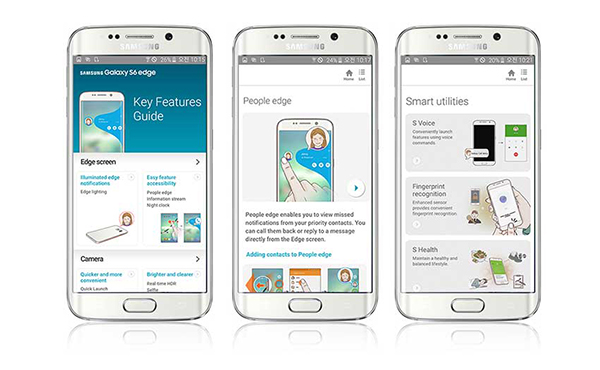
Content that is developed to accompany a product when it is first released must contain:
Grab the user’s attention. Users must understand the purpose of the handbook and not ask “Why do they make multiple versions of the user manual?”
Handbook is designed for new and prospective users. After reading, they should remember the tasks they can perform and the value available to them when they use the main features.
The focus group was conducted in two stages. In the first stage, we invited technical writers and graphic designers to evaluate handbooks we developed for previous models. The session focused on measuring conformance with technical communication fundamentals – textual content, design, usability, and usefulness.
We then analyzed the resultant data, primarily focusing on the high and low scoring areas of the evaluation. At the end of the second stage, the data established the terms of reference for the latest handbook.
One recurring theme from the interviews was that the handbook should continue to have a different focus from that of the more detailed user guide. The handbook’s purpose is to remove any commitment from the user to take action. The purpose of the user guide is to explain in detail all of the different steps of the various user tasks.
Conceptually, the Handbook’s design concentrates on providing satisfaction and entertainment to the user. Users will be informed about important device features and have knowledge about how they can use the feature. This is not a simple transfer of knowledge but it incorporates an entertaining approach to reinforce the value and convenience of the device and features. Our intention is to inform, satisfy, and excite users when they read a product’s Handbook.
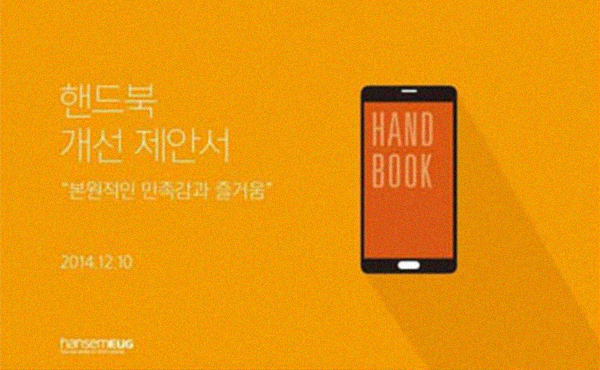
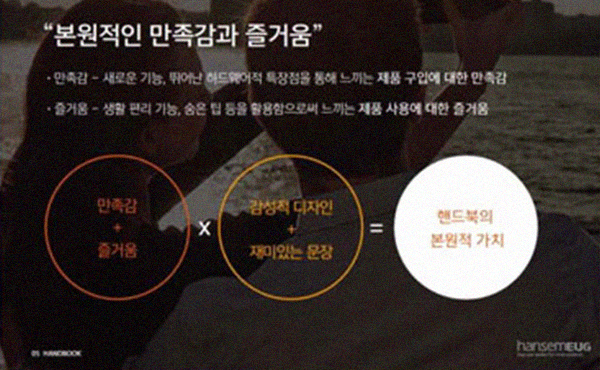
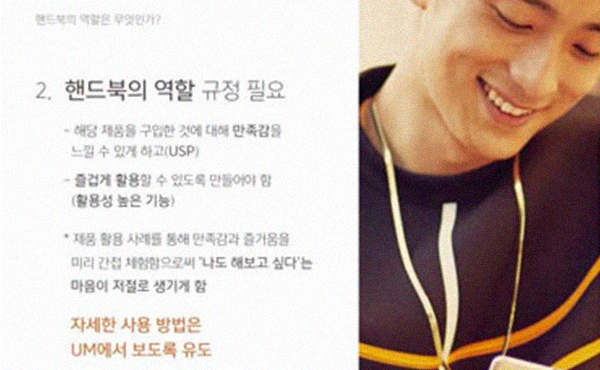
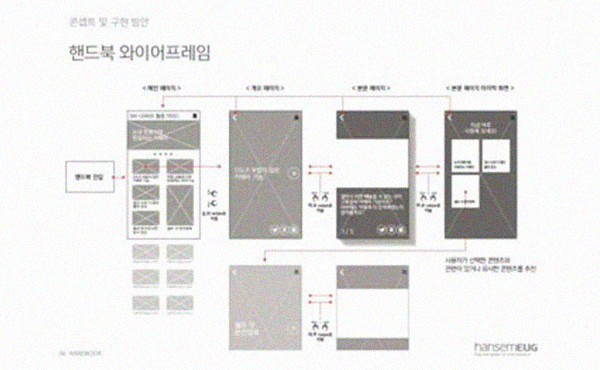
Setting the project’s goals and conceptualizing the content in this way ensures that both the focus and content for the handbook is clear and consistent.
It was important to the team that they resisted following a stereotypical book layout for the handbook. For this reason, we designed a new layout that focused on separate topic-based sections rather than cascading from the table of contents. By putting more emphasis on independent and perfected topics, the users can access the topics they are interested in without having to read through the entire document.
The presentation on the front cover uses graphical text blocks that attract the user’s attention.
The body text follows a simplistic instructional layout. It includes an image that reinforces the feature in action, a short introduction about the user activity that it provides, and then a quick explanation about how to apply it. This layout is applied consistently throughout the handbook to enable users to easily and quickly locate the relevant information.
Once we finished planning the layout we prepared some samples for the client to review.

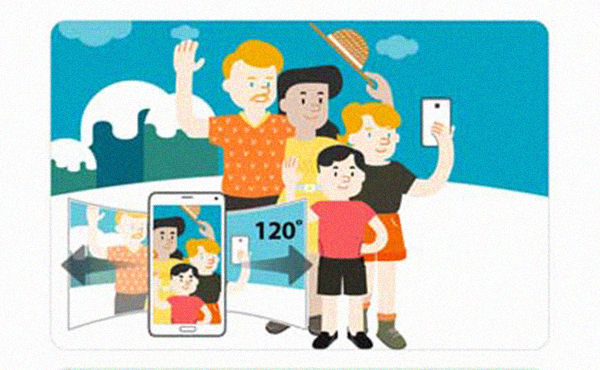


We provided multiple samples to provide the client with a broad range of styles for both illustrations and text. This approach enabled the client to consider the user and their overall content strategy in their final decision. Our design team is used to this creative approach and often results in generating multiple workable options.
An informal and clear style was used to present the user with practical usage scenarios. The scenarios are delivered persuasively to convey the value of the device or feature when used for a realistic task. This approach to style was adopted following feedback from users indicating that they wanted to try out the product for themselves but wanted general reminders of useful tasks.
Feedback such as “it’s interesting and readable but the step-by-step process is too difficult to remember” and “I can’t tell the difference between a user guide and a handbook” has been constructive. We used it to guide several content reviews resulting in more exciting and informative content.
Because space is limited in the handbook and user comprehension is enhanced by integrated graphics, additional resource was directed at the illustrations. Unlike conventional user manuals, the Handbook uses graphics to inspire user-adoption not to complement instructional content. A range of graphics are used, such as still images, animations, flowing slide images in the hardcopy and device-embedded versions.
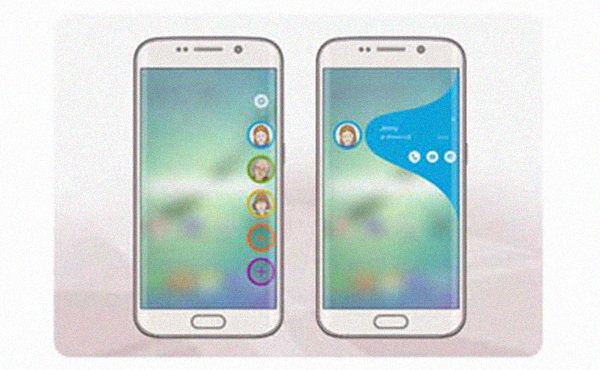
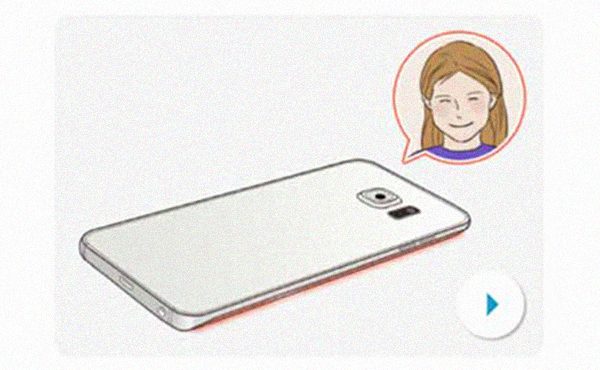
A new genre in user content, the handbook style not only explains products and features but also generates user interest and provides practical ideas for product adopters. These publications also perform as a marketing tool demonstrating its value throughout the lifecycle of a product or feature.
Hansem Global is an ISO Certified and globally recognized language service provider. Since 1990, Hansem Global has been a leading language service company in Asia and helping the world’s top companies to excel in the global marketplace. Thanks to the local production centers in Asia along with a solid global language network, Hansem Global offers a full list of major languages in the world. Contact us for your language needs!
 Transforming B2C Sales Training with Gamification
04.14.2024
Transforming B2C Sales Training with Gamification
04.14.2024
 The Impact of Localization on Salesforce’s Success with Hansem Global
04.07.2024
The Impact of Localization on Salesforce’s Success with Hansem Global
04.07.2024
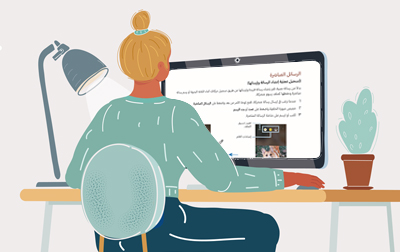 Mastering Right-to-Left (RTL) Language Localization: Avoid the Top 5 Desktop Publishing (DTP) Mistakes for Global Success
04.03.2024
Mastering Right-to-Left (RTL) Language Localization: Avoid the Top 5 Desktop Publishing (DTP) Mistakes for Global Success
04.03.2024